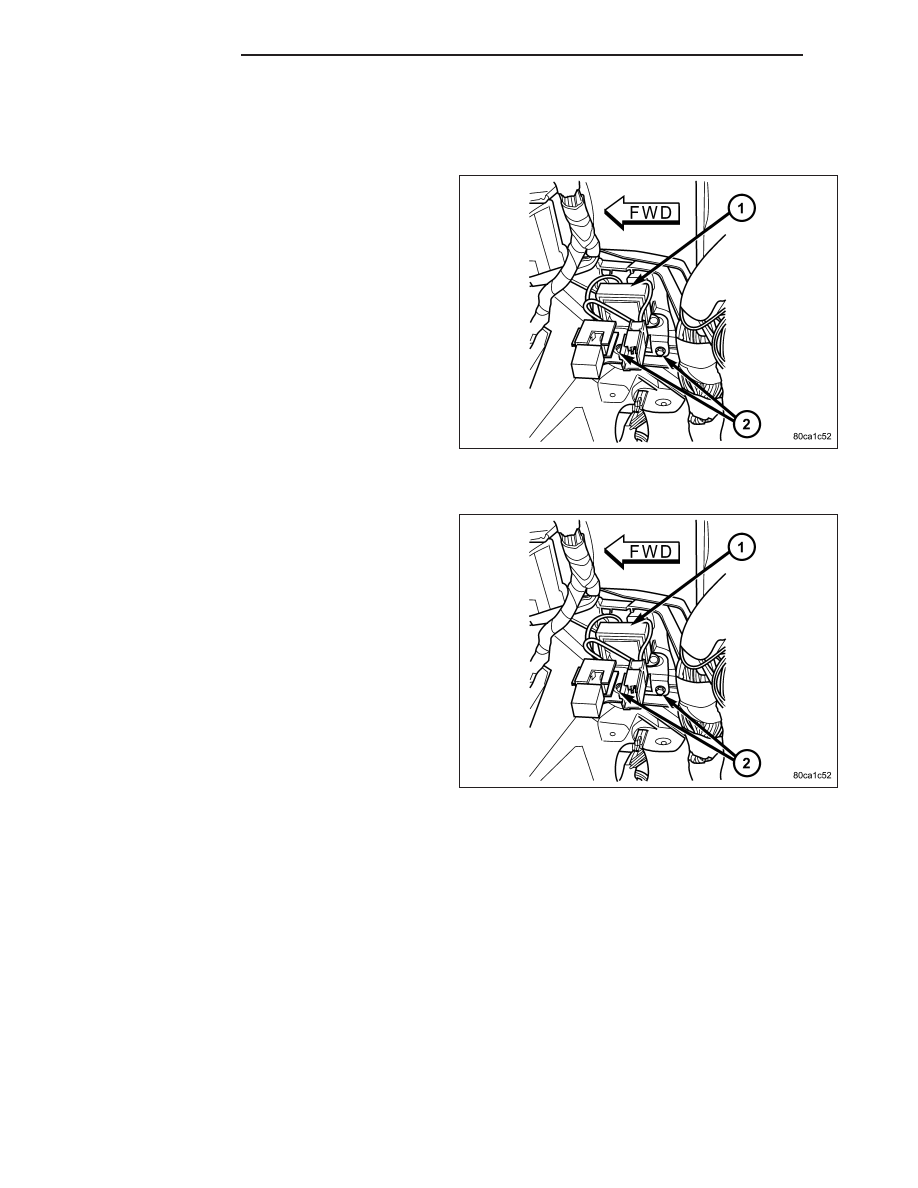Content .. 1431 1432 1433 1434 ..
Jeep Liberty KJ. Manual - part 1433

speaker (+) circuits to the speaker-mounted amplifiers as required. If not OK, replace the faulty amplifier choke
and relay.
REMOVAL
1. Disconnect and isolate the battery negative cable.
2. Remove knee blocker cover and knee blocker.
3. Disconnect the electrical harness connector from
the amplifier choke and relay (1).
4. Remove mounting fasteners and amplifier choke
and relay.
INSTALLATION
1. Install the amplifier choke and relay (1).
2.
Install and tighten the mounting fasteners.
3. Connect the electrical harness connector.
4. Install knee blocker cover and knee blocker.
5. Connect the battery negative cable.
8A - 36
AUDIO/VIDEO
KJ